Brutalist Interior Design: A Remarkable Resurgence
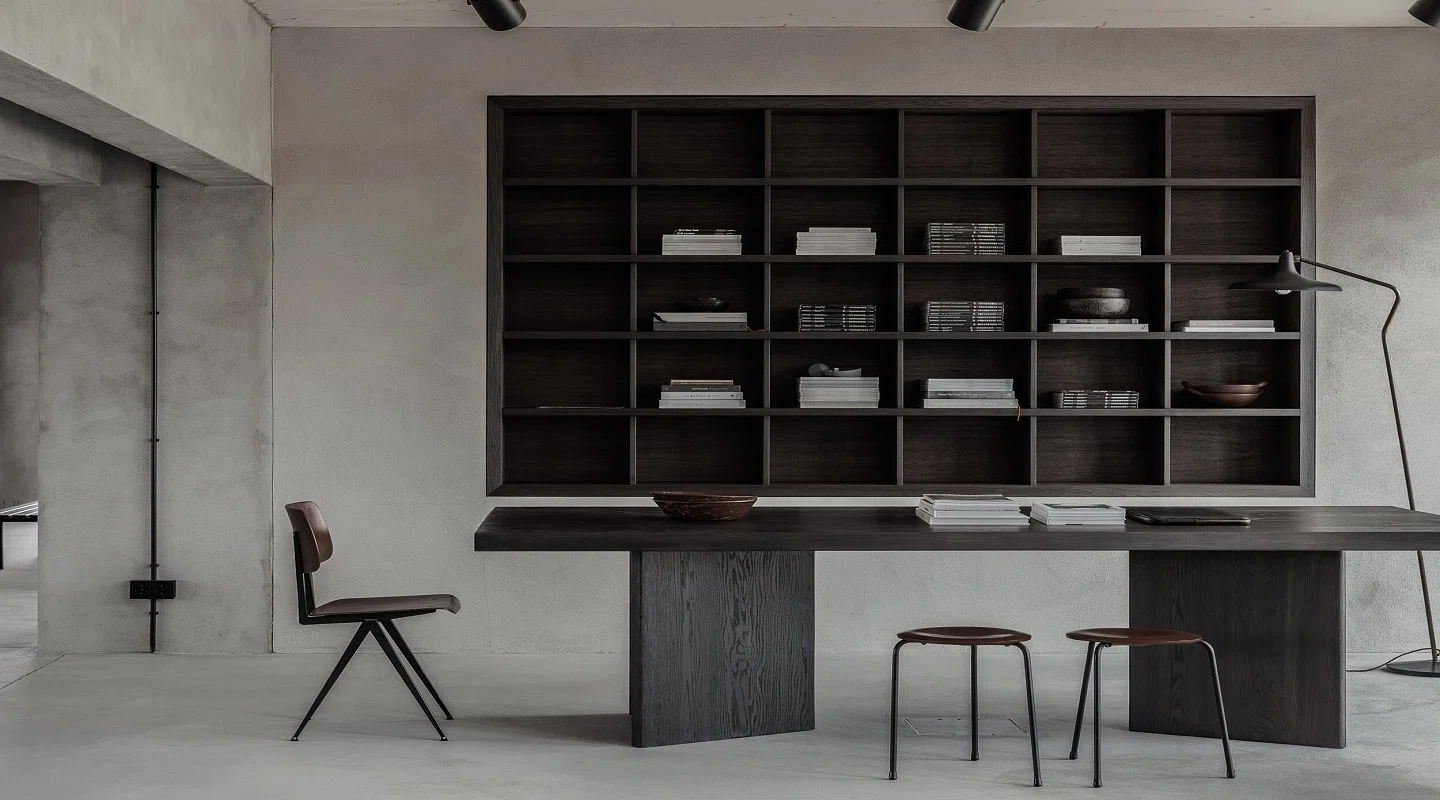
Brutalist architecture, an offshoot of the 20th-century modernist wave, has sparked debate from the moment it first emerged. Characterized by its unrefined, straightforward use of concrete and grand-scale structures, Brutalism has often been labeled as “unfriendly” and “unwelcoming.” Yet, akin to a phoenix soaring anew from its ashes, Brutalism is undergoing an unexpected and impressive renaissance, not solely in architecture but within the realm of interior design. This article delves into brutalist interior design’s essence and unique aspects, offering insight into its journey and current implementation.
Exploring Brutalism: Roots and Key Traits
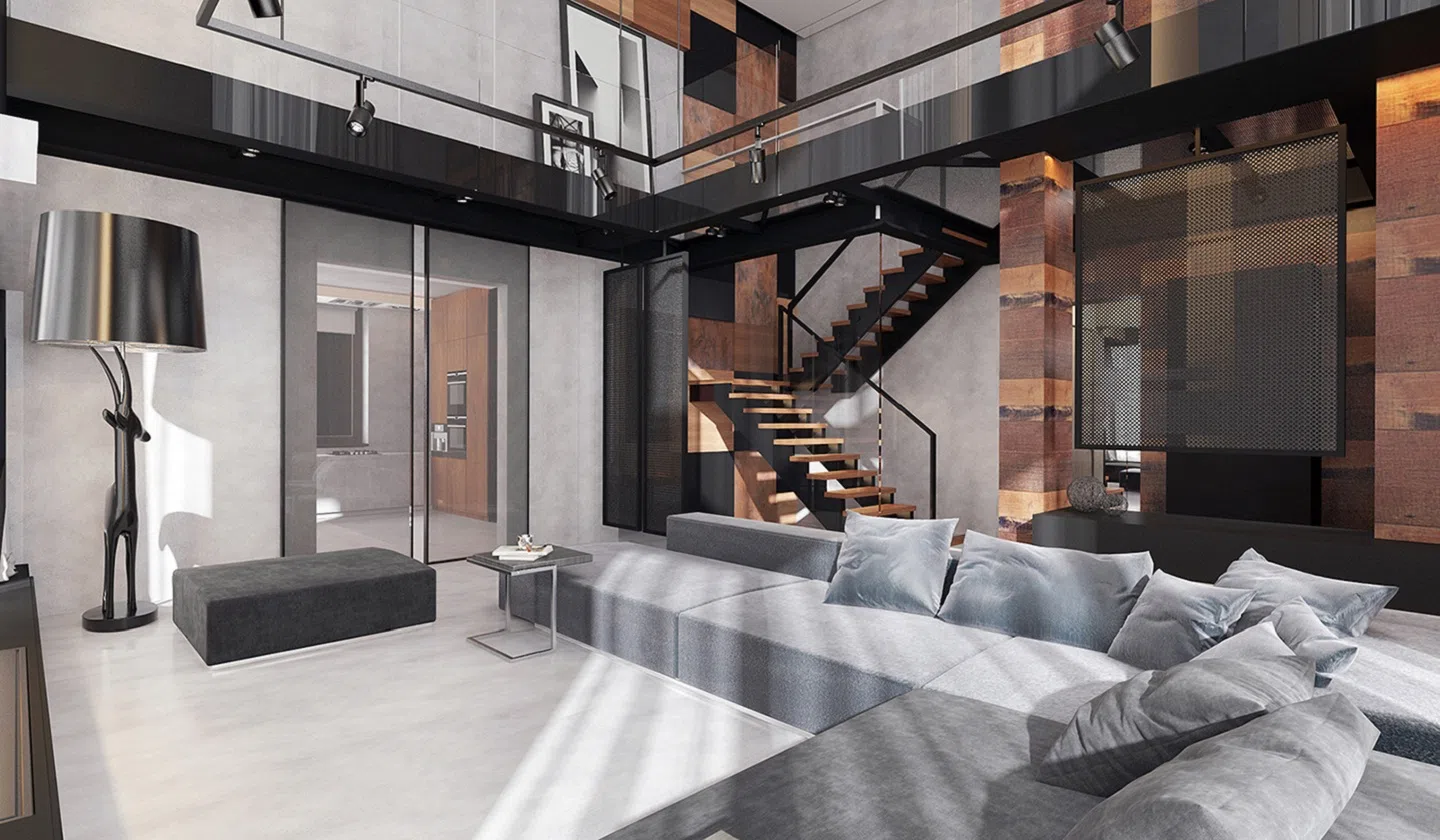
Brutalism originates from the French phrase ‘beton brut,’ translating to raw concrete, a staple of this design aesthetic. Pioneers of architecture during the 1950s and 1960s, including Le Corbusier and Paul Rudolph, strongly advocated this architectural trend. Brutalism initially found its identity entwined with societal utopian ideals, showcasing a candid and straightforward aesthetic that mirrored the circumstances of post-war society.
Brutalist interior design mirrors its architectural sibling’s starkness, authenticity, and audacity. Common elements include displaying raw, untreated materials, from unadorned concrete walls to visible steel beams. Design choices often lean towards minimal color, focusing instead on texture and shape. Brutalist designs typically incorporate sizable, statue-like furniture, crude finishes, and an absence of decorative features.
Explore more different interior design styles.
The Brutalist Resurgence: Why Now?
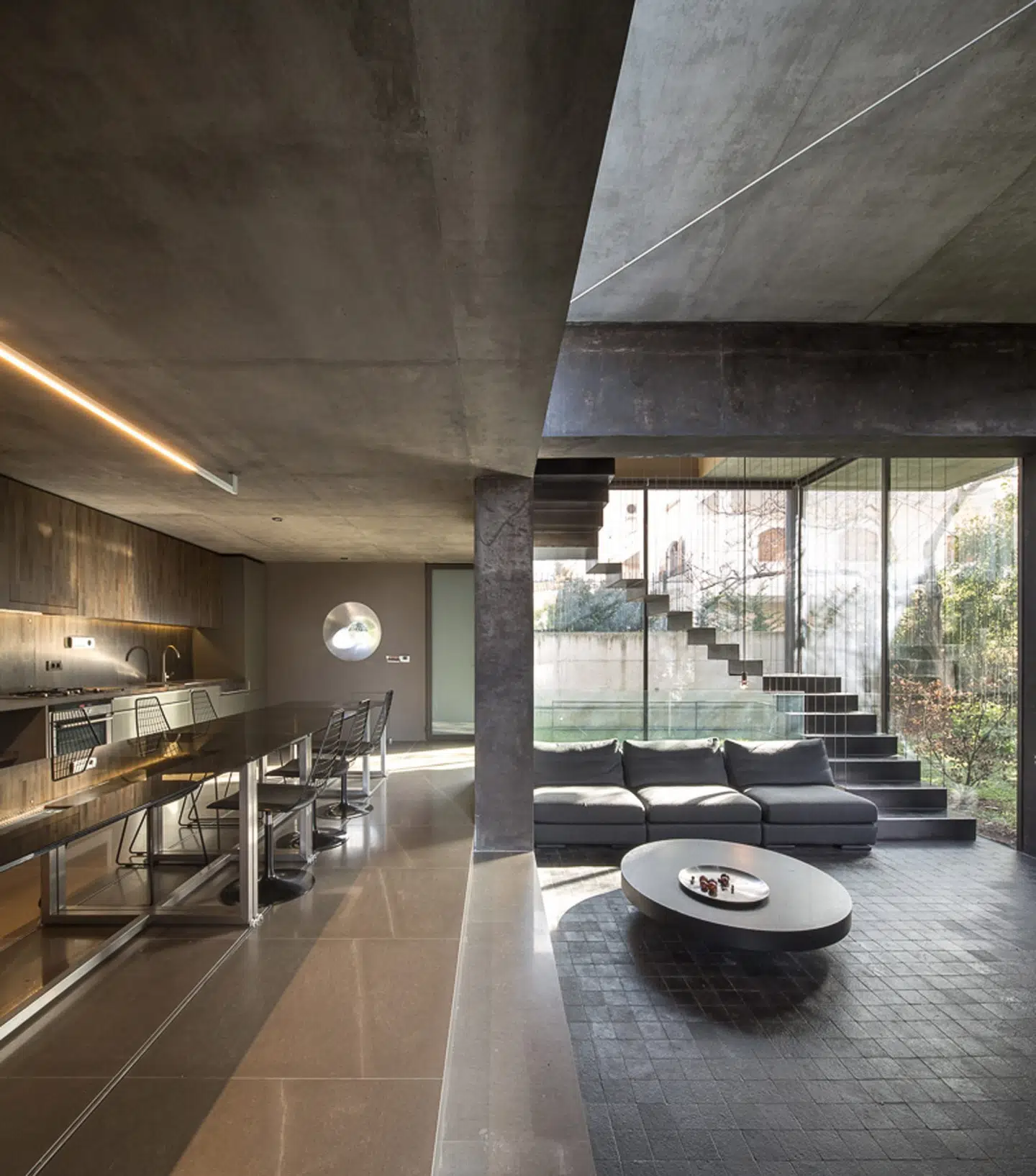
The return of Brutalism may appear unusual in a time dominated by the streamlined aesthetics of minimalist design and the cozy, welcoming palettes of styles like hygge. However, this trend can be seen as a response to these prevailing styles. Brutalism provides a touch of authenticity and realism, starkly contrasting the glossy, sometimes sterile feel of current design tendencies.
The modern generation’s penchant for genuineness and self-expression makes brutalist interiors appealing. These designs resonate with their raw allure and daring deviation from the norm. They are a tangible representation of a broader societal movement, a longing to rebel against conventional norms and express personal creativity.
Don’t you know what to do with the blank space on your living room wall? We offer you amazing living room wall décor ideas.
Elements of Brutalist Interior Design

Brutalist interior design has unique features, colors, shapes and materials which we will elaborate on below.
- Raw Materials Unveiled: Unhidden raw materials lay the groundwork for brutalist interior design. Elements such as untouched concrete walls, bare brickwork, and visible metal structures shape the aesthetic. With their inherent flaws and visible functions, these components introduce a tangible, sensory aspect to the space, captivating occupants with their rugged, untreated surfaces.
- Striking Shapes and Structures: Bold, angular shapes and exaggerated structures are crucial to a Brutalist interior. Whether a hefty, geometric couch or a towering concrete coffee table, furniture and fixtures often mimic standalone artworks, producing a profound visual statement.
- Minimalistic Color Scheme: The color scheme within the brutalist design is sparse, largely restricted to the natural colors of the materials used. Shades of grey, black, white, and earthy hues take precedence, allowing the textures and forms to be the focal point.
- Focus on Practicality: Brutalist interior design emphasizes functionality, with no space for extra embellishments. Every component fulfills a function. This commitment to practicality over aesthetic appeal further highlights the sincerity of the design.
What do you know about organic living room design?
Brutalist Bedroom Design

- Start by incorporating concrete into the space, either through exposed concrete walls or concrete-look finishes. This sets the foundation for the industrial vibe.
- Choose minimalistic furnishings with a preference for angular and functional pieces. Furniture made from heavy materials like concrete, metal, or wood fits the brutalist style. Stick to a neutral color palette, including grays, blacks, whites, and earthy tones, which create a stark contrast against the raw materials.
- For lighting, opt for industrial-style fixtures like pendant lights with exposed bulbs or fixtures incorporating metal or concrete elements. Leave structural elements exposed, such as pipes or rough plaster walls, to enhance the raw and unfinished look.
- Geometric shapes and patterns play a significant role in brutalist design. Incorporate them into décor elements like rugs, wall art, and angular furniture. Keep décor to a minimum, favoring functionality over excessive ornamentation. Utilitarian accessories, such as metal or concrete trays and exposed shelving, can add to the overall aesthetic.
- Artwork and sculptures should align with the brutalist style, often leaning towards modern and abstract art. To balance the harshness of raw materials, introduce soft textiles like bedding, curtains, and rugs. Adding indoor plants brings a touch of nature to the space and complements the industrial materials.
- When arranging furniture and décor, prioritize functionality. Customizing the brutalist design to your personal taste is essential, as it can be quite stark. Incorporate elements that reflect your personality and interests while staying true to the brutalist aesthetic.
Practical Implementation and Adaptations
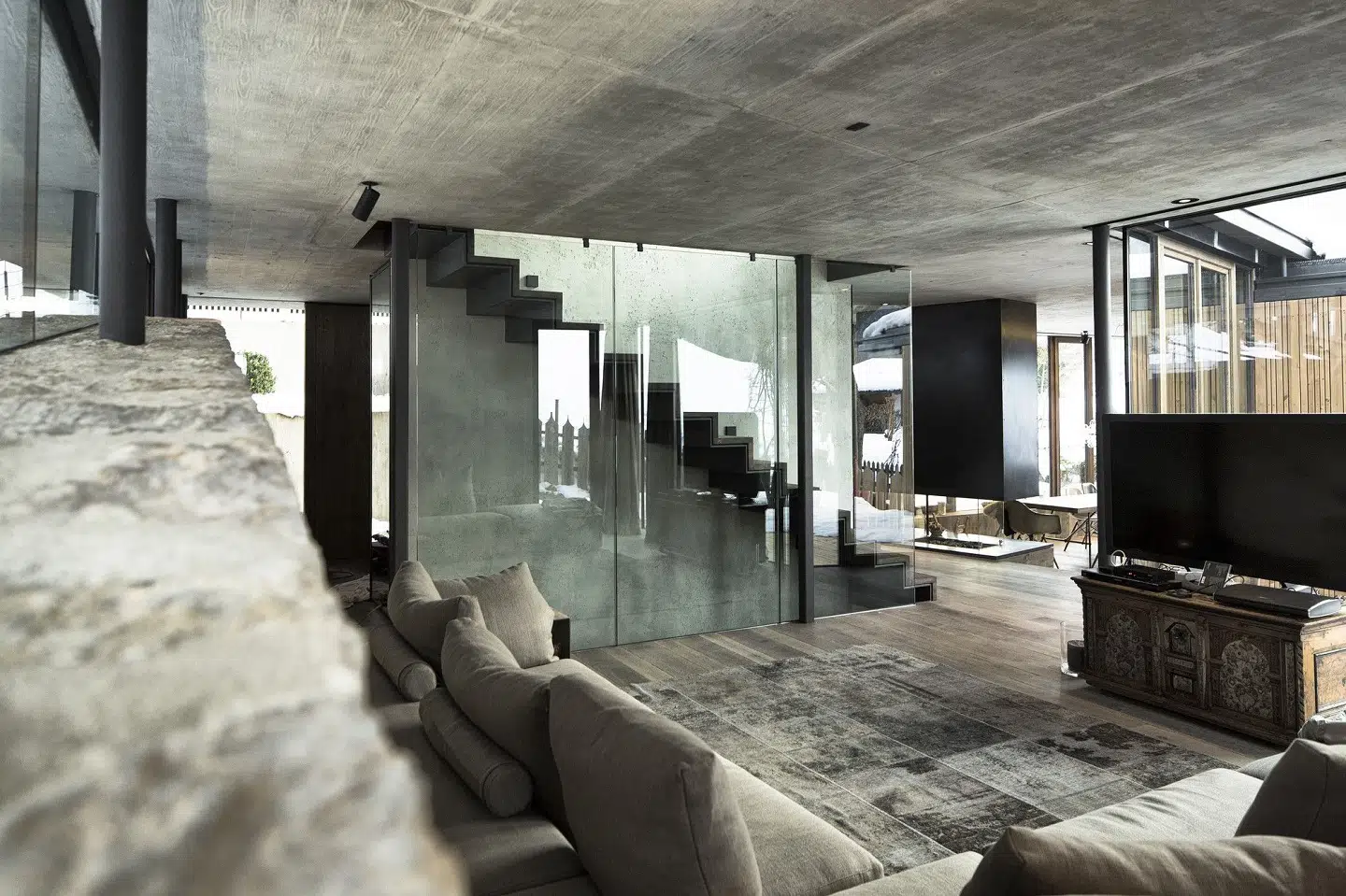
Though the authentic form of Brutalism might seem severe to some, adjustments have been made to suit contemporary lifestyles better. Accents of color, incorporating warmer materials like timber, and including soft furnishings can offer comfort without straying from Brutalism’s core principles.
Public environments such as coffee shops, art exhibits, and offices especially fit brutalist design, where unpolished aesthetics can establish a lasting and striking impression. Within residential contexts, designers often opt for a mixed approach, merging Brutalism’s rawness with the coziness of other design styles to craft a harmonious, inhabitable space.
Unpacking Brutalism’s Impact on Art and Culture

This non-traditional design genre has undeniably made a lasting impact, not only within architecture and design but also within art and popular culture. From sculptures and exhibits employing Brutalist components to serving as the backdrop for dystopian movies, Brutalist aesthetics have infiltrated various societal facets. Even digital platforms and graphic design have been influenced by Brutalism, seen in the minimalist and unrefined user interfaces.
Brutalism and Eco-Friendliness
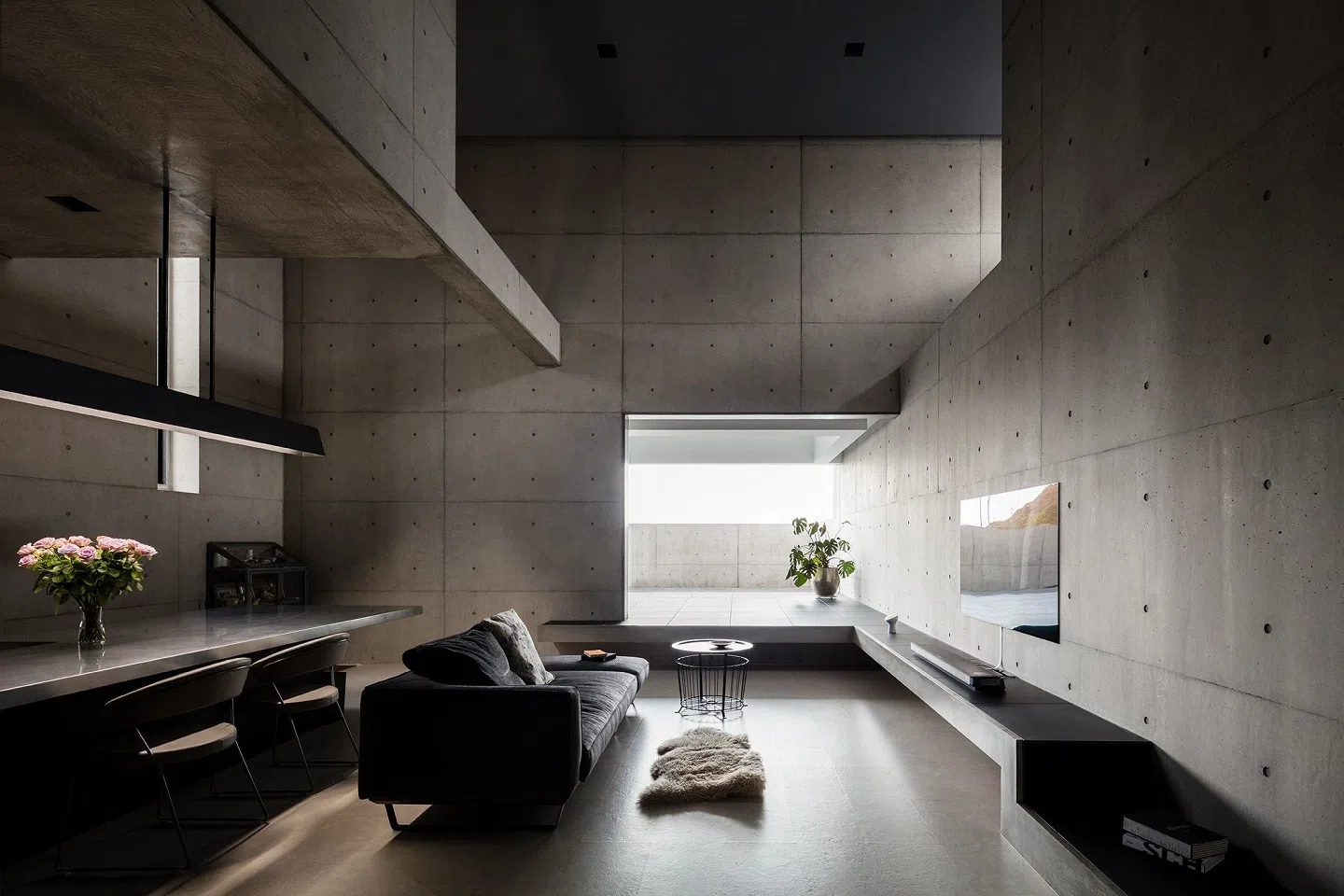
Brutalism’s sustainability potential is often noticed. The sturdiness and long-lasting nature of materials typically used in Brutalist design – concrete, steel, brick – mean that Brutalist buildings and interiors can endure over time. Additionally, the intrinsic Brutalist values of honesty and functionality are aligned with eco-friendly design principles. The rough, untreated surfaces eliminate the need for damaging paints and finishes, and the focus on structure and utility often leads to efficient space utilization.
Distinguished Brutalist Interior Designers

Several prominent designers have embraced Brutalist principles and incorporated them into distinct and expressive interiors. Designers such as Rick Owens, renowned for his striking, monolithic furniture designs, and Vincent Van Duysen, celebrated for his minimalist and tactile approach, have shown the possibilities of Brutalist principles in crafting impactful interior environments.
Incorporating Brutalist Elements into Your Space
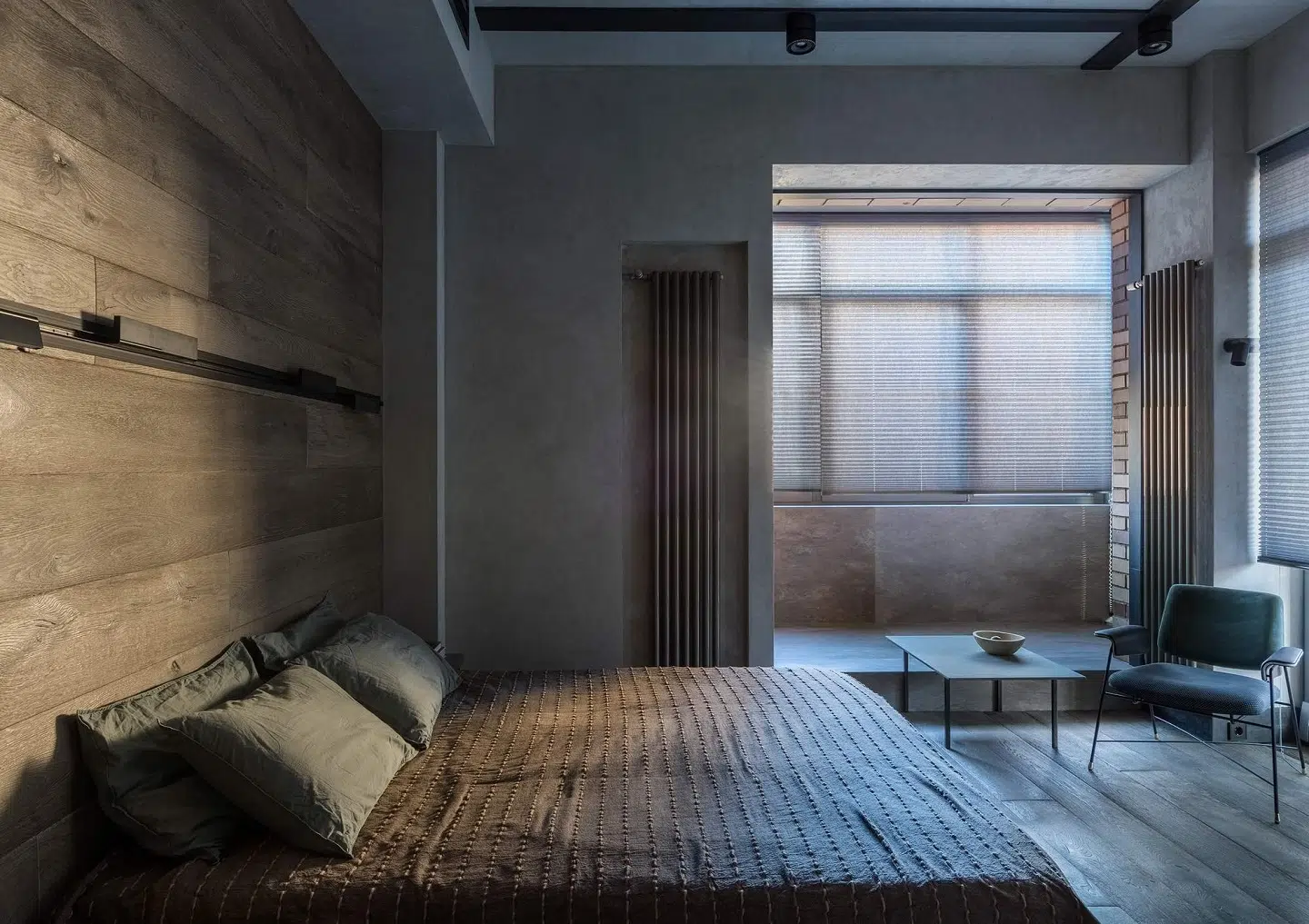
Integrating Brutalist design into your environment doesn’t necessitate residing in a concrete fortress. You can begin by including Brutalist-influenced furniture – bold, statue-like pieces that demand attention. With their angular, geometric shapes and raw finishes, lighting fixtures can also introduce Brutalism into a space. Lastly, think about the materials in your environment. Revealing a brick wall or incorporating a concrete finish can lend your space a dash of the Brutalist aesthetic.
Brutalism and Its Detractors
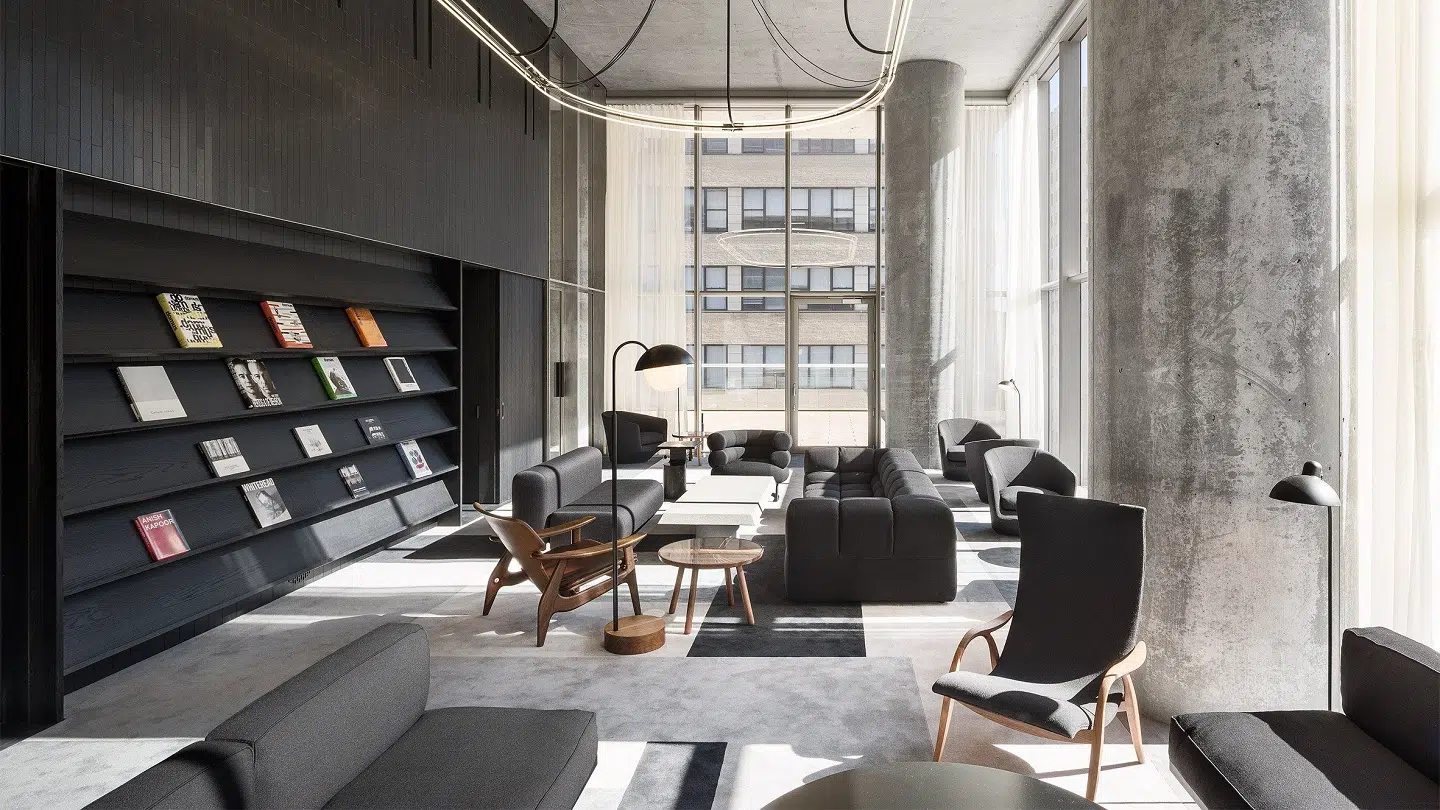
Like any design approach, Brutalism has its critics. Some contend that its stark, formidable aesthetic lacks coziness and neglects the human need for comfort and relaxation. However, many Brutalist devotees argue that the charm of this design style is found in its rawness and authenticity. Like all art forms, Brutalism is subjective, and its appeal varies from individual to individual.
Brutalism in the Digital Era
Brutalism has discovered an unexpected place in the digital landscape, with a rise in “Brutalist websites” emerging as an alternative to the polished, image-heavy sites that rule the internet. Typically characterized by stark, un-styled typography, absence of images, and raw code, these sites mirror the Brutalist ethos of honesty, function over form, and challenging the status quo.
Brutalist Influence: Beyond Indoor Spaces
Brutalism’s impact isn’t confined to building architecture or interior design; it also seeps into landscape design. Brutalist landscapes, though not as recognized as Brutalist architecture, hold an equal amount of intrigue and allure. Massive concrete forms are contrasted with the softness of natural components like grass, water, and trees. These spaces often exhibit an innovative use of levels and crisp, geometric shapes, forming dramatic spatial experiences that defy traditional notions of outdoor spaces.
The Psychological Response to Brutalism

One of the most captivating aspects of Brutalist design is the psychological reaction it induces. It’s a style that demands attention, triggering a wide range of emotions, from awe to unease. The raw, unadorned surfaces and imposing structures can impart a sense of steadiness and permanence, providing some with a feeling of safety. However, these characteristics can seem daunting to others, with the massive, monolithic forms appearing impersonal and unwelcoming. The psychological impact of Brutalism attests to its potency as a design style and its capacity to stimulate thought and challenge our assumptions about built spaces.
Closing Thoughts: The Future of Brutalist Interior Design
With its raw allure and straightforward expression, Brutalist interior design provides a stimulating deviation from mainstream design aesthetics. As our appreciation for authenticity and individual expression persists, Brutalist interiors will likely maintain their influence. By stretching boundaries and challenging norms, Brutalist design reminds us that beauty can be discovered in unanticipated places and that there is a deep elegance in simplicity and rawness.



Did you find what you were looking for?